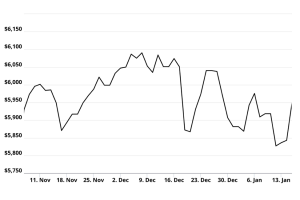
Shares of Faraday Future (NASDAQ:FFIE) are up more than 10% today. That has investors wondering whether this is the effect of a short squeeze and if there is more gas in the tank to fuel the rise. FFIE stock also began trading on 1-for-80 reverse split-adjusted basis on Aug. 28, bringing shares above the Nasdaq minimum requirement threshold of $1.
This morning, the electric vehicle (EV) company announced that FF Developer Co-Creation Officer Kelvin Sherman would take delivery of his FF 91 2.0 Futurist Alliance at the company’s “919 Developers AI Co-Creation Festival” on Sept. 19. Faraday Future also announced several Co-Creation events, including the “Delivery Co-Creation Day” and “Developer Track Co-Creation Day.”
The Co-Creation events seek to spread awareness of EV adoption and the FF 91 2.0 Futurist Alliance. Preorders for the vehicle are currently open through Faraday’s website or app.
Is FFIE Stock Setting Up for a Short Squeeze?
In the past few days, FF has made a variety of other announcements, such as delivering the FF 91 2.0 Futurist Alliance to Jason Oppenheim as well as the vehicle setting a new class lap record at Buttonwillow Raceway Park. Among “ultimate luxury production EVs weighing over 6,000 pounds,” the vehicle set the fastest lap time of one minute and 35 seconds.
Meanwhile, FFIE stock carried a short interest as a percentage of float of 23.1% as of Aug. 31. Generally, a short interest above 10% is viewed as high while a short interest above 20% is viewed as very high. The number of FFIE shares sold short would take 2.5 days to fully cover.
With a high short interest, we can also take a look at FFIE’s cost to borrow (CTB) fee to gauge short seller interest. The fee represents the annual rate that short sellers must pay to borrow stock.
As of today, the fee tallies in at 9.79%, which is higher than the standard range between 0.3% and 3% but still not excessively high. That said, the fee has risen compared to when it was 6.82% at the beginning of the month. A high CTB fee indicates high short seller demand while a low fee indicates the opposite. At the same time, a high fee can also influence short sellers to sell out of their positions in an attempt to escape the high fee. FFIE’s CTB fee doesn’t seem to be there yet.
On Penny Stocks and Low-Volume Stocks: With only the rarest exceptions, InvestorPlace does not publish commentary about companies that have a market cap of less than $100 million or trade less than 100,000 shares each day. That’s because these “penny stocks” are frequently the playground for scam artists and market manipulators. If we ever do publish commentary on a low-volume stock that may be affected by our commentary, we demand that InvestorPlace.com’s writers disclose this fact and warn readers of the risks.
Read More: Penny Stocks — How to Profit Without Getting Scammed
On the date of publication, Eddie Pan did not hold (either directly or indirectly) any positions in the securities mentioned in this article. The opinions expressed in this article are those of the writer, subject to the InvestorPlace.com Publishing Guidelines.f



